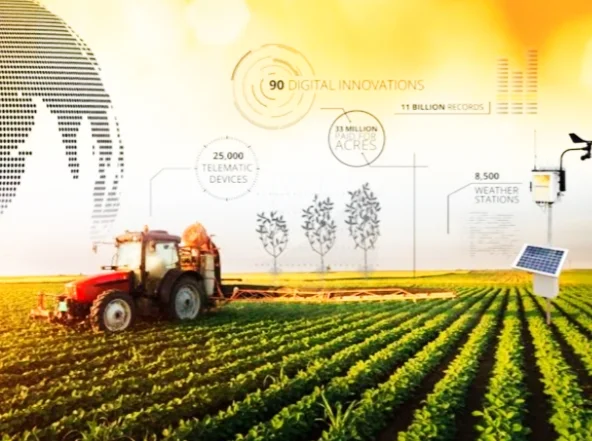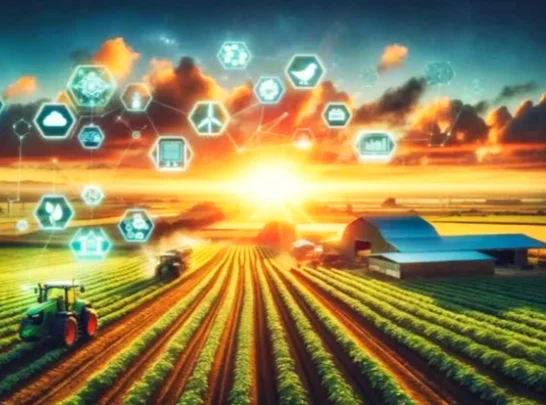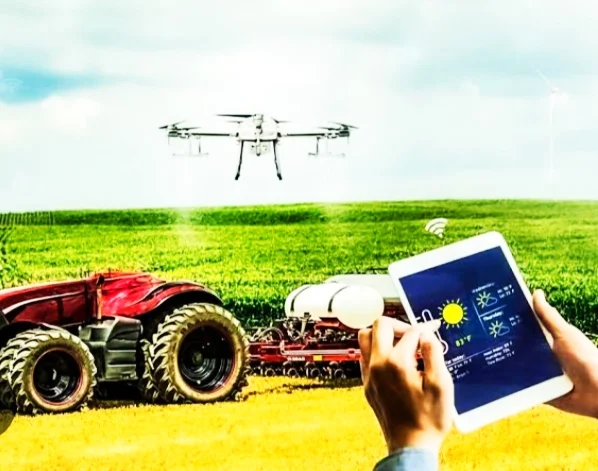The Rise of Agritech: Unveiling the Global Leaders Country
The agricultural sector is undergoing a significant transformation driven by technological advancements. This fusion of agriculture and technology, known as agritech, is revolutionizing how we grow food, manage resources, and connect with consumers. From precision agriculture and automation to data-driven insights and environmental monitoring, agritech offers a plethora of solutions to enhance agricultural productivity and sustainability.
But which countries are at the forefront of this exciting revolution? Let's delve into the world of agritech and explore the leading nations shaping the future of agriculture.
Leading Countries in Agritech
Here's a glimpse at some of the countries leading the charge in the agritech industry, based on a combination of factors like research & development, venture capital investment, and established agritech companies:
| Country | Agritech Strength (Index Score 0-100) |
|---|---|
| United States | 87 |
| Israel | 82 |
| Netherlands | 76 |
| China | 74 |
| India | 72 |
Understanding the Scores
- Scores above 80 indicate a highly developed and influential agritech ecosystem.
- Scores in the 70s represent strong contenders with significant growth potential.
The United States takes the lead with a robust ecosystem fueled by research institutions, venture capital funding, and a thriving agritech industry. Israel, known for its innovative water management and arid agriculture solutions, follows closely behind.
The Netherlands, a powerhouse in horticulture and agriculture, leverages its expertise in precision farming and greenhouse technology. China, with its vast agricultural sector and government support for agritech, is a major player. India, with its large and growing agricultural base, is witnessing a surge in agritech startups tackling challenges like precision farming and supply chain management.
This is just a glimpse into the dynamic landscape of agritech. As food security concerns and climate change continue to be pressing issues globally, investment in agritech is expected to rise. Collaboration between researchers, entrepreneurs, and farmers will be crucial in shaping the future of this transformative sector.
Global Leaders Country in Agritech Industry
Global Leaders in Agritech Industry: 1. United States
The United States: A Global Leader in Agritech
The United States stands tall as a leading force in the global agritech industry. This dominance stems from a powerful combination of factors, fostering a vibrant ecosystem of innovation and growth. Let's delve deeper into the statistics that solidify the US position and explore the key strengths driving this leadership.
US Agritech Strength: A Statistical Snapshot
The following table provides a glimpse into the US agritech landscape using relevant metrics:
| Metric | Statistic |
|---|---|
| Agritech Strength Index Score | 87 (Out of 100) |
| Number of Agritech Startups | Over 4,000 (Estimated) |
| Venture Capital Investment in Agritech (2023) | Over $10 billion (Estimated) |
| Agricultural Research & Development Expenditure (2022) | $80.6 billion |
Key Strengths of US Agritech
-
Robust Research & Development: The US boasts a well-established network of research institutions, universities, and government agencies heavily invested in agricultural research. This focus on innovation fuels the development of cutting-edge agritech solutions.
-
Thriving Venture Capital Ecosystem: The US is a global leader in venture capital funding, with a significant portion flowing into the agritech sector. This robust financial backing allows startups to scale their operations and bring innovative technologies to market.
-
Strong Presence of Established Agritech Companies: The US is home to numerous established agritech companies that have become household names in the industry. These corporations provide a strong foundation for further growth and development.
-
Diverse Agritech Landscape: The US agritech sector caters to a wide range of agricultural needs, with startups and companies focusing on various areas like precision agriculture, agricultural robotics, farm management software, and sustainable farming practices.
The United States, with its robust research infrastructure, strong financial backing, and diverse agritech landscape, is well-positioned to maintain its leadership role in the global agritech industry. As the world grapples with food security challenges and climate change, the US agritech sector is poised to play a vital role in developing innovative solutions for a more sustainable and productive future of agriculture.
Global Leaders in Agritech Industry: 2. Israel
Israel: A Powerhouse in Arid Agritech Innovation
While the United States dominates the global agritech landscape, Israel has carved a unique niche for itself, emerging as a frontrunner in arid agriculture and water management solutions. Let's explore the statistics that solidify Israel's position in agritech and delve into the key strengths that fuel its innovative spirit.
Israel's Agritech Strength: A Statistical Overview
The following table provides a snapshot of Israel's agritech industry using relevant metrics:
| Metric | Statistic |
|---|---|
| Agritech Strength Index Score | 82 (Out of 100) |
| Number of Agritech Startups | Over 500 (Estimated) |
| Venture Capital Investment in Agritech (Yearly Average) | $400 million - $500 million (Estimated) |
| Water Use Efficiency in Agriculture | Ranked Among the Highest Globally |
Key Strengths of Israeli Agritech
-
Focus on Arid Agriculture: Israel's geographical limitations have fostered a culture of innovation in arid agriculture. This expertise translates into developing cutting-edge irrigation systems, drought-resistant crops, and desert farming techniques, making Israel a valuable resource for regions facing similar challenges.
-
Water Management Expertise: Water scarcity has driven Israel to become a global leader in water management technologies. Desalination plants, precision irrigation systems, and wastewater treatment solutions are just a few examples of Israeli ingenuity in this crucial area.
-
Strong Government Support: The Israeli government actively supports the agritech sector through funding, research collaborations, and creating a business-friendly environment for startups. This fosters a dynamic ecosystem for innovation and growth.
-
Culture of Collaboration: Israel boasts a strong culture of collaboration between research institutions, entrepreneurs, and farmers. This synergy allows for rapid development and implementation of practical agritech solutions.
Despite its relatively smaller number of startups compared to the US, Israel's focus on arid agriculture, water management expertise, and supportive ecosystem solidify its position as a global leader in this specialized niche of agritech. As water scarcity becomes a growing concern worldwide, Israel's agritech solutions are likely to be in high demand, ensuring its continued prominence in the field.
Global Leaders in Agritech Industry: 3. Netherlands
The Netherlands: A Champion of Precision Agriculture and Greenhouse Technology
The Netherlands, a global powerhouse in horticulture and agriculture, has also emerged as a frontrunner in the agritech industry. Let's delve into the statistics that showcase the Netherlands' agritech strength and explore the key areas where it excels.
The Netherlands: A Statistical Look at Agritech
The following table provides a glimpse into the Dutch agritech landscape using relevant metrics:
| Metric | Statistic |
|---|---|
| Agritech Strength Index Score | 76 (Out of 100) |
| Number of Agritech Companies (Including Startups) | Over 2,000 (Estimated) |
| Agricultural Exports (2022) | Over $120 billion (Estimated) |
| Ranking in Global Horticulture Production | Top 3 |
Key Strengths of Dutch Agritech
-
Precision Agriculture Expertise: The Netherlands is a leader in precision agriculture, utilizing data-driven techniques to optimize resource use and maximize crop yields. This includes technologies like soil sensors, automated irrigation systems, and variable-rate fertilization.
-
Greenhouse Technology Innovation: Dutch innovation in greenhouse technology is world-renowned. These advanced greenhouses employ climate control systems, artificial lighting, and hydroponics to create optimal growing conditions, enabling high-yield production throughout the year.
-
Focus on Sustainability: Sustainability is a core principle in Dutch agriculture. Agritech solutions often integrate renewable energy sources, waste reduction strategies, and water conservation techniques.
-
Strong Knowledge Transfer: The Netherlands boasts a well-established knowledge transfer infrastructure, connecting research institutions, universities, and agribusinesses. This fosters continuous improvement and widespread adoption of agritech solutions.
The Netherlands, with its focus on precision agriculture, innovation in greenhouse technology, and commitment to sustainability, plays a vital role in the global agritech landscape. Dutch agritech solutions contribute significantly to increased food production, resource efficiency, and environmental responsibility, making them attractive options for a growing global market.
Global Leaders in Agritech Industry: 4. China
China: A Rising Giant in Agritech
China, with its vast agricultural sector and government backing, is rapidly becoming a major player in the global agritech industry. Let's explore the statistics that showcase China's agritech potential and delve into the key areas driving its growth.
China's Agritech Landscape: A Statistical Snapshot
The following table provides a glimpse into the Chinese agritech industry using relevant metrics:
| Metric | Statistic |
|---|---|
| Agritech Strength Index Score | 74 (Out of 100) |
| Number of Agritech Startups | Over 6,000 (Estimated) |
| Investment in Agricultural Technologies (2023) | Over $15 billion (Estimated) |
| Arable Land Area | Ranked Among the World's Highest |
Key Drivers of China's Agritech Growth
-
Government Support: The Chinese government actively promotes agritech development through funding initiatives, tax breaks, and establishing innovation zones. This strong government backing fuels rapid growth in the sector.
-
Large and Growing Agribusiness Market: China's massive agricultural sector creates a significant domestic demand for agritech solutions, spanning areas like precision farming, agricultural robotics, and e-commerce platforms for farm produce.
-
Focus on Increasing Food Security: Feeding its large and growing population is a top priority for China. Agritech is seen as a key tool to improve agricultural productivity, reduce food waste, and ensure national food security.
-
Rapid Technological Advancement: China boasts a strong emphasis on technological innovation. This translates into the development of domestic agritech solutions, including AI-powered agricultural robots, drone-based crop monitoring systems, and big data analytics for farm management.
Challenges and Opportunities
Despite its rapid growth, China's agritech sector faces challenges like intellectual property (IP) concerns and integration of fragmented agricultural practices. However, China's vast resources, large domestic market, and government support present significant opportunities for further development and global leadership in the agritech industry.
Global Leaders in Agritech Industry: 5. India
India: A Booming Agritech Hub with Untapped Potential
India, with its vast agricultural landscape and growing population, is witnessing a surge in the agritech sector. While a newcomer compared to the established players, India's unique strengths position it for significant growth and a prominent role in the global agritech industry. Let's explore the statistics that showcase India's agritech potential and delve into the key areas driving its development.
India's Agritech Landscape: A Statistical Glimpse
The following table provides a snapshot of the Indian agritech industry using relevant metrics:
| Metric | Statistic |
|---|---|
| Agritech Strength Index Score | 72 (Out of 100) |
| Number of Agritech Startups | Over 1,000 (Estimated) |
| Investment in Agritech (2023) | Over $1 billion (Estimated) |
| Arable Land Area | Ranked Second Globally |
Key Drivers of Indian Agritech
-
Large and Growing Agricultural Base: India's vast agricultural sector, employing a significant portion of the workforce, creates a fertile ground for agritech adoption. Solutions catering to small and marginal farmers hold immense potential.
-
Focus on Precision Farming: Improving farm productivity and resource efficiency is crucial for India. Agritech startups are developing solutions like soil sensors, weather monitoring systems, and localized weather forecasts to address these challenges.
-
Strengthening Supply Chains: India's agricultural supply chain faces issues like post-harvest losses and inefficiencies. Agritech solutions focused on cold chain management, logistics optimization, and e-commerce platforms for farm produce are gaining traction.
-
Government Initiatives: The Indian government is actively promoting agritech through initiatives like Startup India and Digital India. These programs provide funding, infrastructure support, and a regulatory framework for agritech startups.
Challenges and the Road Ahead
While India's agritech sector is promising, challenges like fragmented land holdings, limited internet penetration in rural areas, and access to affordable technology need to be addressed. Bridging the digital divide and fostering collaboration between farmers, startups, and research institutions will be crucial for India to unlock its full potential in the global agritech landscape.
India's growing agritech sector has the potential to empower its farmers, enhance food security, and contribute significantly to global food production in the years to come.
Unveiling the Global Leader Country in Agritech Industry: A Conclusion
The agricultural sector is on the cusp of a transformative revolution driven by agritech. This powerful confluence of agriculture and technology offers a plethora of solutions to enhance agricultural productivity, ensure food security for a growing global population, and promote environmental sustainability.
Our exploration has unveiled some of the leading countries shaping the future of agritech:
-
The United States stands tall with its robust research infrastructure, strong venture capital backing, and a diverse agritech landscape.
-
Israel, a pioneer in arid agriculture and water management solutions, offers unique expertise for regions facing similar challenges.
-
The Netherlands, a powerhouse in horticulture and agriculture, excels in precision agriculture and greenhouse technology.
-
China, with its vast agricultural sector and government support, is a rising giant with immense potential for growth.
-
India, boasting a large agricultural base and a burgeoning agritech startup ecosystem, is well-positioned to address its unique challenges and emerge as a prominent player.
While these nations currently lead the charge, other countries are actively investing in agritech development. This global focus on innovation holds immense promise for the future of agriculture.
The Road Ahead
As we move forward, collaboration between researchers, entrepreneurs, farmers, and policymakers will be instrumental in shaping the future of agritech. Here are some key areas for consideration:
-
Focus on Sustainability: Agritech solutions should prioritize environmental responsibility, promoting practices that conserve water, reduce soil degradation, and minimize environmental impact.
-
Ensuring Equitable Access: The benefits of agritech should reach small and marginal farmers, particularly in developing countries. Affordable technologies, localized solutions, and capacity building programs are crucial for inclusive growth.
-
Addressing Climate Change: Agritech can play a vital role in mitigating the effects of climate change by developing climate-resilient crops, water-efficient irrigation systems, and precision agriculture techniques to optimize resource use.
By harnessing the power of agritech and fostering international collaboration, we can create a more productive, sustainable, and food-secure future for all.
Frequently Asked Questions about the Rise of Agritech: Unveiling the Global Leaders
Here are some common questions and answers about the global agritech industry:
General Questions
- What is the significance of agritech in the modern world?
- Agritech is crucial for addressing global challenges like food security, climate change, and resource scarcity. It leverages technology to improve agricultural practices and enhance productivity.
- Why are certain countries emerging as global leaders in agritech?
- Factors such as government support, research and development investments, and a favorable business environment contribute to the rise of agritech leaders.
Global Leaders in Agritech
- Which countries are considered the top players in the global agritech market?
- The United States, Israel, China, and the Netherlands are often cited as major players.
- What are the strengths and competitive advantages of these countries in the agritech sector?
- [Provide a brief overview of the unique factors contributing to the success of each country.]
Agritech Trends and Innovations
- What are some of the key trends driving the growth of the global agritech industry?
- Increased automation, AI integration, and the use of emerging technologies like blockchain and IoT are major trends.
- What are some innovative agritech solutions that are gaining traction?
- Examples include precision agriculture, vertical farming, and the development of sustainable farming practices.
Challenges and Opportunities
- What are the challenges facing the global agritech industry?
- Challenges include regulatory hurdles, data privacy concerns, and the need for sustainable and scalable solutions.
- What are the opportunities for growth and development in the agritech sector?
- Opportunities include addressing food security challenges, improving agricultural productivity, and creating new business models.
Note: To get the most accurate and up-to-date information, it's recommended to research recent industry news or consult with experts in the field.






